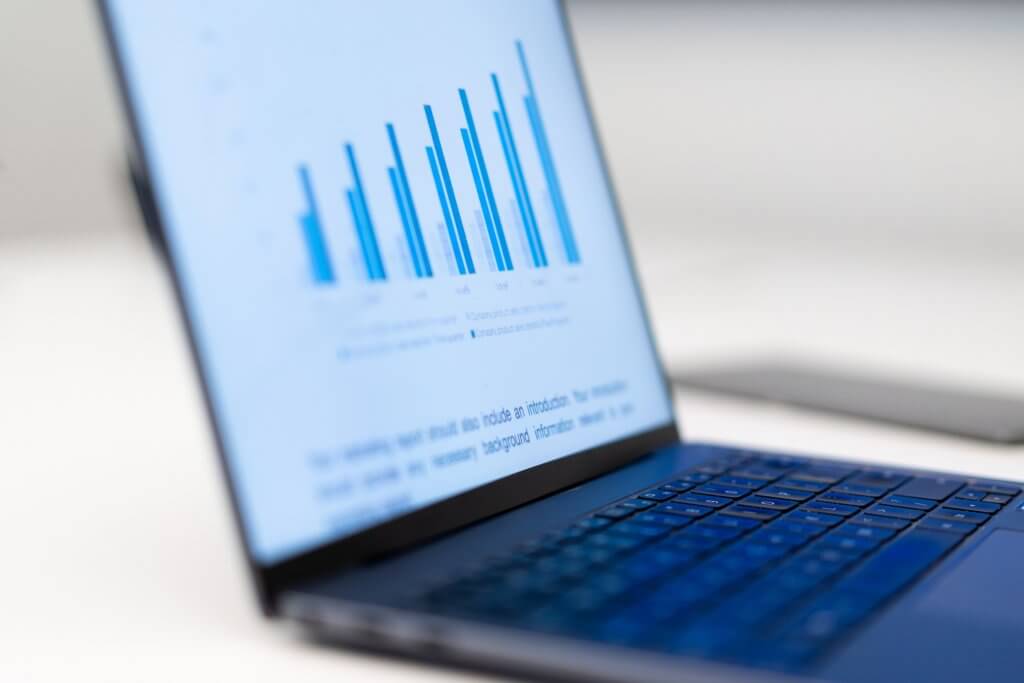26.09.2024 by Infogram
Election coverage demands more than compelling stories; it needs impactful charts and maps that enrich and support these stories. However, creating engaging data visualizations can be time-consuming and resource-intensive. That’s where Infogram comes in.
Polling data offers a rich tapestry of public opinion, yet its raw form can be overwhelming and difficult to interpret. To unlock the full potential of polling data, effective visualization and analysis are key. With the power of data visualizations, we can uncover hidden patterns, trends, and insights that inform decision-making.
Whether you’re searching what tool is helpful in identifying patterns in polling data or what are tips and strategies to help you analyze polling data, this article will answer your questions. In this article, you’ll discover a comprehensive roadmap for navigating the process, from understanding the fundamentals of polling data to mastering the art of data visualization. Let’s dive right in!

Understanding polling data
Polling data is a snapshot of public opinion captured through surveys and interviews. It provides valuable insights into people’s thoughts, feelings, and preferences on various issues. To accurately interpret polling data, it’s crucial to understand key statistical concepts.
- Sample size determines the number of people surveyed. A larger sample generally leads to more reliable results.
- Margin of error indicates the potential range of variation in the results. A smaller margin of error suggests greater accuracy.
- Confidence level expresses the probability that the true population value falls within the margin of error.
Also, note that different types of polls serve distinct purposes. Here’s an example:
- Opinion polls measure public sentiment on specific issues or candidates at a particular point in time.
- Exit polls survey voters immediately after they cast their ballots to predict election outcomes.
- Tracking polls repeatedly measure public opinion over time to identify trends and shifts.

By understanding these fundamentals, you can begin to extract meaningful information from polling data.
Analyzing polling data
Polling data offers valuable insights into public opinion. To effectively analyze these insights, it’s essential to go beyond surface-level statistics.
By calculating basic statistics like mean, median, and mode, you can understand the central tendencies of the data. However, to delve deeper into the data spread, standard deviation is key. This metric helps measure how much the data points deviate from the mean.
To identify trends and patterns over time, time series analysis is indispensable. This technique allows you to track shifts in public opinion and potentially identify turning points. Additionally, correlation analysis can uncover relationships between poll results and other factors, providing valuable context for understanding public sentiment.
It’s important to remember that polls are snapshots of public opinion at a particular moment. Factors like sample size, margin of error, and question wording can significantly impact results. Moreover, external events can influence public sentiment, potentially leading to fluctuations in poll data. For accurate predictions, it’s crucial to combine poll data with other information and expert analysis.
Tips and strategies for analyzing polling data
Evaluating poll quality
Scrutinize methodology: A well-designed poll should use a robust methodology, such as random sampling, to ensure representativeness. Pay close attention to the polling method (phone, online, in-person), sample size, and margin of error. A larger sample size and smaller margin of error generally indicate a more reliable poll.
Assess sample representativeness: The sample should accurately reflect the population being studied. Consider factors like demographics (age, gender, race, income), geographic location, and voter registration status. A representative sample is essential for drawing accurate conclusions.
Identify potential biases: Be mindful of question wording, interviewer effects, and selection bias. These factors can introduce bias into poll results. For example, leading questions can sway respondents’ answers, while interviewer effects can influence responses based on the interviewer’s behavior or characteristics.

Data analysis and interpretation
Cross-tabulate data: Analyze poll results by demographic groups to identify trends and differences in opinions. For example, you might compare the views of different age groups, genders, or income levels on a particular issue.
Track trends over time: Use time series analysis to monitor changes in public sentiment and identify potential turning points. This can help you understand how opinions have evolved over time and identify significant shifts.
Consider external factors: Incorporate economic indicators, news events, and social media sentiment to obtain a broader understanding of the political landscape. These factors can influence public opinion and provide additional context for interpreting poll results.
Combine multiple polls: Comparing results from different polling firms can help identify consistent trends and reduce the impact of individual poll errors. By combining data from multiple sources, you can increase the reliability of your analysis.
Avoid overinterpretation: Remember that polls are snapshots in time and subject to error. Avoid making definitive predictions based on a single poll. Instead, focus on identifying trends and patterns that emerge from multiple polls over time.
Visualization
Create visuals: Use graphs, charts, and maps to effectively communicate poll findings to a wider audience. Visualizations can help make complex data more accessible and understandable.
Highlight key findings: Focus on the most important trends and patterns in your visualizations. Use clear labels, titles, and annotations to guide viewers’ attention to the key takeaways.
Use interactive elements: Consider incorporating interactive elements, such as clickable charts or filters, to allow users to explore data in different ways. This can provide a more engaging and personalized experience.

By following these tips and strategies, you can improve your ability to analyze polling data and draw meaningful insights. Now, let’s dig deeper into how interactive and effective visualizations can help you extract insightful information!
The power of visualizations in analyzing polling data
Transforming data into visual representations makes complex information accessible. Data visualizations can help you identify trends, patterns, and relationships that might be difficult to notice through raw data alone.
Key visualization techniques
To make sure your data is easily understandable, you first have to pick your chart. Here are the some of the most common visualization options for polling data:
- Bar charts: Ideal for comparing categorical data, such as the distribution of responses across different age groups or genders.
- Line charts: Effective for tracking trends over time, such as changes in public opinion on a specific issue.
- Pie charts: Useful for showing the composition of a whole, such as the percentage of voters supporting different candidates.
- Maps: Can be used to visualize geographic data, such as regional variations in public opinion.
- Interactive dashboards: Allow you to explore data dynamically, providing a more interactive and engaging experience.
Not sure which chart to pick for your data? Try Infogram’s AI-powered chart suggestion tool. In a matter of a few clicks, you’ll be offered the most suitable chart options, already populated with your data! Read more here.
Benefits of effective visualization
There are many advantages of effective polling data visualizations. Here are a few notable ones:
- Improved understanding: Data visualizations can help you grasp complex data more quickly and easily, making it easier to identify trends and patterns.
- Improved communication: Visualizations can be used to effectively communicate findings to a wider audience, including policymakers, journalists, and the general public.
- Data-driven decision-making: By visualizing data, you can make more informed and data-driven decisions.
Infogram: A powerful visualization tool
Infogram is a versatile data visualization tool that can help you create stunning and interactive visualizations. With its user-friendly interface and interactivity options, Infogram makes it easy to transform your polling data into visually appealing, engaging, and informative graphics.
Key features of Infogram:
- AI functionalities: Level up your data visualization process with AI-powered functionalities. Generate infographics in seconds or pick the best chart option for your data with AI-powered chart suggestions.
- Drag-and-drop interface: Easily create visualizations without requiring advanced technical skills.
- Interactive elements: Add interactive features, such as tooltips, filters, and drill-down capabilities, to enhance your visualizations.
- Integration with other tools: Easily connect Infogram with other data sources like Google Drive or JSON, and analysis tools.
By leveraging the power of effective visualization tools like Infogram, you can extract valuable insights from your polling data and communicate your findings in a compelling and impactful way.
Final considerations
Polling data offers a rich information of public opinion, yet its raw form can be overwhelming and difficult to interpret. To unlock the full potential of polling data, effective visualization and analysis are key. With the power of data visualizations, we can explore patterns, trends, and insights that inform decision-making.
By following the tips and strategies outlined in this article, you can notably improve your ability to analyze polling data and extract valuable insights.
Remember, effective visualization is not just about creating visually appealing charts; it’s about telling a compelling story with your data. By combining sound analysis techniques with powerful visualization tools like Infogram, you can transform raw polling data into actionable insights that inform decision-making and shape public discourse.
Get data visualization tips every week:
New features, special offers, and exciting news about the world of data visualization.